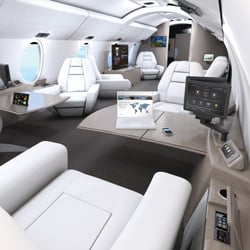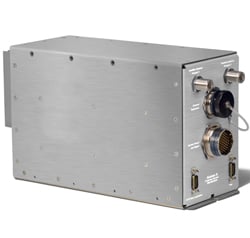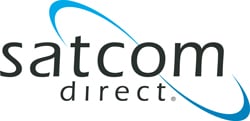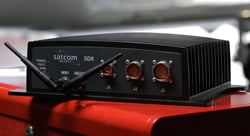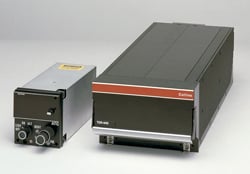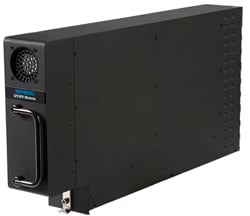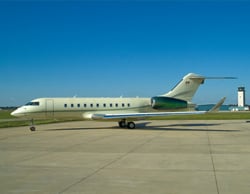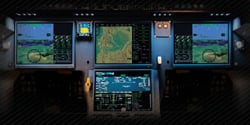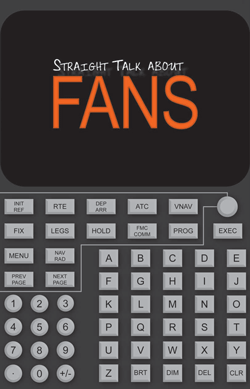Duncan Aviation recently released an updated Straight Talk book on the NextGen initiative Automatic Dependent Surveillance-Broadcast (ADS-B). Intended as a learning tool to answer your questions regarding ADS-B Out, we also hoped it would inspire more questions and discussion surrounding the NextGen technologies.
We have not been disappointed. The questions have been rolling in ever since.
 Below are real questions from aircraft operators just like you and their answers.
Below are real questions from aircraft operators just like you and their answers.
Answer: I don't believe that there is a mandated interface between the hardware components. However, there are only a couple being used. Off the top of my head, they are RS-232 and Arinc 429.
Do TCAS-II-equipped large airplanes see UAT equipped GA airplanes directly?Answer: A TCAS-II-equipped aircraft will not see a UAT-equipped aircraft any better than if the aircraft did not have a UAT. A TCAS-II-equipped aircraft will see it by virtue of the TCAS. Did you mean ADS-R system?
Why can't someone create a way to send a coded PIREP via ADS-B Out so ATC and every other ADS-B-In receiver can capture it? That way, in addition to FIS-B one could have real-time PIREPS AND Pilots would be much more willing to send reports versus changing frequencies to EFAS and verbally providing a report at great risk of missing a critical ATC transmission?
Answer: Unfortunately, ADS-B is not designed to carry messaging other than what is being mandated. However, digital messaging of all types is being developed as we speak, which will likely accommodate your idea.
If I have a 1090 Transponder, and a sat nav capability. Exactly what do I need additionally to comply with the ADS-B mandate? It is simply to format the sat nav info for 1090 broadcast, right? What would a simple system diagram look like for this integration?Answer: You are close. The 1090 Transponder (for Part 25 aircraft) must be Mode S and meet the specification necessary to transmit ADS-B information. The GPS data must also be WAAS/GPS information supplied from a WAAS/GPS engine which meets the WAAS specification. Then they must be connected and configured properly. There must also be a component installed which monitors the WAAS/GPS/ADS-B data for failure which supplies that failure information to indications in the cockpit.
Is there such a thing as ADS-B In for 1090ES? Or is that only for UAT?Answer: Yes...there is. Although the manufacturers have not focused on 'In' yet, as they are still struggling with 'Out', at least in terms of Part 25 applications.
How do I upgrade Honeywell Sys TCAS-II to 7.1Answer: The upgrade for your Honeywell TCAS system depends on the exact system you have installed. If you provide us with the part number for the TCAS processor installed in the aircraft, we will be able to tell you the upgrade path.
In 2020 will the current transponder and Mode C equipment become obsolete and the FAA no longer accept codes and information from that equipment? Do I turn off my Mode C transponder on 1 Jan 2020, and not use it anymore?Answer: The answer to your question depends on the specific aircraft you are referring to.
The short answer is no. Your transponder and Mode C equipment remains and ADS-B is added. ADS-B will become primary ATC and transponder secondary. Assuming you are referring to a Part 23 aircraft, you have the option of equipping for ADS-B with 1090ES transponder upgrades, or with a UAT transmitter.
How can I find out what version of transponder I have in a Falcon 2000, s/n 022
Answer: If you can tell me the part numbers of your transponders, I can tell you exactly where it stands. They will be Collins TDR-94Ds with Part Number 622-9210-XXX. The -XXX are the three numbers that I need to know.
Follow-up question 1: Both transponders have -008 at the end of the part number.
Follow-up answer 1: You have Elementary and Enhanced Surveillance with the -008 Transponders. They would need upgraded to -501 for ADS-B Out status. The pre-requisite for ADS-B will be a WAAS upgrade to your existing Flight Management Systems, which on S/N 022 (I believe) are the Collins FMS and GPS-4000s.
Follow-up question 2: The airplane is for sale and the buyers want to know if it’s just a software or hardware change. They are looking for a dollar figure for what it will take. Is it closer to 20K or 100K? We have Collins FMS, and GPS 4000a
Follow-up answer 2: It's a hardware change. For ADS-B, the airplane would need the WAAS upgrade with FMS upgrades, GPS-4000Ss and -501 TDRs with some annunciators in the cockpit. The mods would be closer to $150k.
Follow-up questions 3: This is great info. Without this upgrade, after December 2015 this Falcon will not be able to go into Europe?
Follow-up answer 3: No sir. The EASA mandate for 2015 is forward-fit. All new aircraft being certificated in EASA countries must meet the mandate. Retrofit aircraft (such as the Falcon) need to be retrofit by 2018. With that said, the Falcon may start to see some degradation of flight services because it is not equipped, but it will be legal to fly in EASA airspace.
What and when do we need to equip a 1975 Gulfstream II, s/n xxx?Answer: I assume your G-II is N-registered. As such, the aircraft will need to be equipped with ADS-B Out in order to operate in U.S. airspace by January 2020.
In a Part 25 aircraft like yours, it will likely need to be fit with a WAAS-enabled GPS sensor and dual Mode S transponders which have ADS-B capability. I can tell you more if I had some detailed information about the current equipment configuration in the aircraft.
Besides the cost issues raised in the GA market to implement ADS-B, what are the key challenges, as of 2014, that lie ahead for meeting the FAA 2020 ADS-B mandate?Answer: There are a couple of challenges we have been working to overcome. All of these issues are specific to Part 25 certificated aircraft.
- Certification manpower and understanding by local FAA representatives.
- ADS-B product development has been extremely slow to come to market.
- The sheer number of aircraft and aircraft types.
How ADS-B information is used in Flight Management System (FMS)?Answer: Your onboard Flight Management System does not employ ADS-B information. In some aircraft, the Flight Management System with an approved WAAS-GPS receiver can provide GPS information to the ADS-B system, but that is the extent of the interface.
What are the implications and deadlines for experimental aircraft?
Answer: The rules are indiscriminate between experimental and non-experimental aircraft or Part 91 and 135. They are dependent on where your aircraft is flying.
As with the current transponder operating requirements, the ADS-B rule requires operators to have ADS-B Out avionics installed and operating in order to fly their aircraft in the busiest airspace, as described below:
- Class A, B, and C airspace.
- All airspace at and above 10,000 feet Mean Sea Level (MSL) over the 48 contiguous United States and the District of Columbia.
- Within 30 nautical miles of airports listed in 14 CFR §91.225, from the surface up to 10,000 feet MSL.
- For Class E airspace over the Gulf of Mexico from the coastline of the United States out to 12 nautical miles, at and above 3,000 feet MSL.
The date for the mandated equipment to be installed, certified and operational is January 1, 2020.
How will ADS-B impact airfield design?Answer: At this time, I don't know what impact ADS-B will have on airfield design. My guess would be that airfield design will be more affected by increased capacity needs in the future.
If you haven’t already, download your free copy of the most recent version of the ADS-B Straight Talk book here.



 An article by Duncan Aviation’s Regional Avionics Sales Manager, Mark Francetic, was recently featured in the
An article by Duncan Aviation’s Regional Avionics Sales Manager, Mark Francetic, was recently featured in the  As the January 2020 ADS-B deadline gets closer every day, the questions keep pouring in. At Duncan Aviation, it is our goal to provide operators with the most accurate information in a clear, concise manner and to answer their most pressing questions.
As the January 2020 ADS-B deadline gets closer every day, the questions keep pouring in. At Duncan Aviation, it is our goal to provide operators with the most accurate information in a clear, concise manner and to answer their most pressing questions.
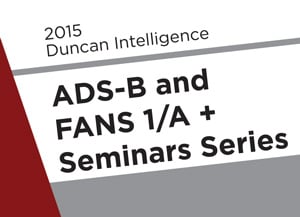
.jpg)

.jpg?width=175&height=460&name=aviator_700_black_small-(blog).jpg)

